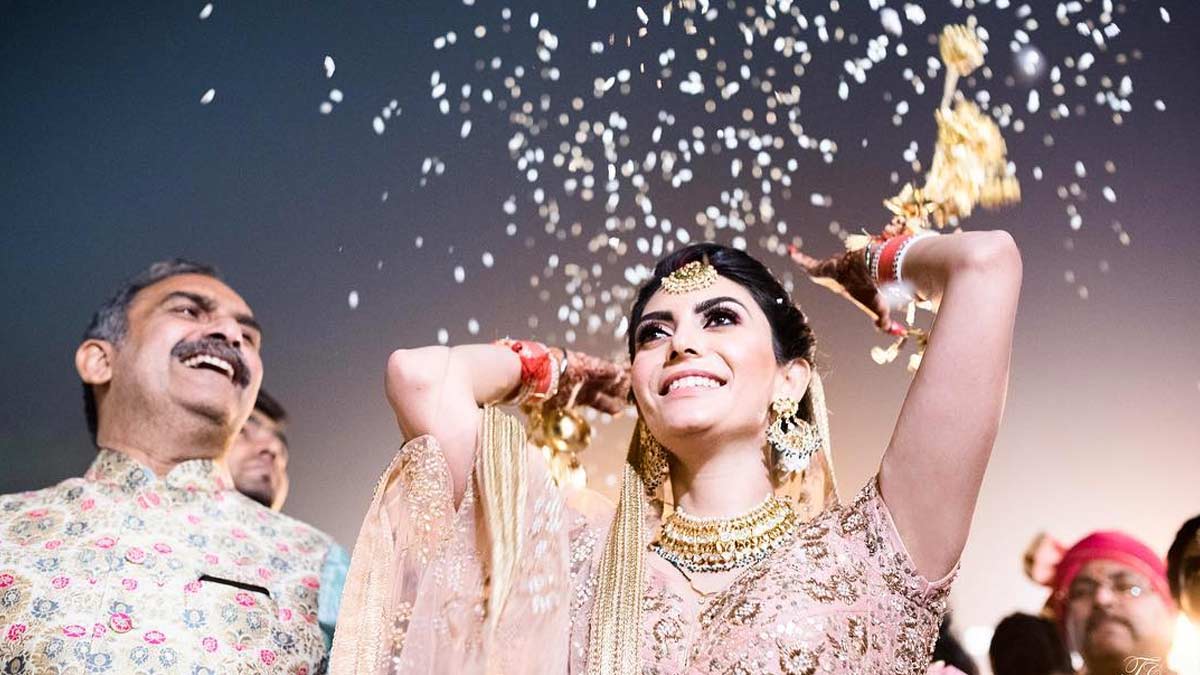
A wedding is meant to be all fun and laughter. While there are many dance performances and speeches by loved ones, there is a whole set of emotions that go up and down during the entire festivities.
Where on one hand the siblings celebrate the marriage with excessive dancing and rituals, and the parents are going through the sweet sorrow feeling of letting go of their little princess! There is a separate ceremony for this significance to part away with their daughter that is called ‘bidai’.

Going years back, brides were given away to kings, and princes as a gift, property, or a compensatory gift, if a kingdom had to surrender or if a treaty had to be made between two kingdoms. This is how the whole concept of ‘bidai’ started.
Wedding rituals have followed a ritualistic path for years now. Giving away the newlywed daughter to her new family is not only a significant ritual, but is a ritual that encourages the bride to go on with her life, giving it a fresh start.

For when a father gives away his daughter, he is letting her go on a new journey in life. A bidai ceremony is a two-fold ceremony. While the parents are sending away their daughter to a new family, their daughter is thanking them for taking care of her in return, and so is her new family.
Read More-How To Find The Best Makeup Artist For Your Wedding
The bidai ceremony is generally carried out after the ‘saat phere’, as soon as the couple is declared married and is ready to leave for their new life when we talk about Punjabi or Hindu weddings.
When we talk about Bengali weddings, the bidai ceremony takes place the day after the ‘saat phere’, morning or evening. Cultures may have different timings but the rituals are pretty much similar.
The bride throws rice/wheat grains, mixed with flower petals and coins at her parents from the back, without looking back, while she makes her way towards the exit gate. This particular custom symbolizes her appreciation and her attempt to repay the 'dues' to her parents.
Read More-How To Look Slim In Wedding Photos

The rice and coins are symbolic of the wealth and prosperity that the bride spreads at every corner of the house. She performs this rice-throwing ritual five times before leaving the house. The family members collect them in their hands as a token.
Once this ritual is completed, the father of the bride takes her hand and offers it to the groom. That's when the groom promises to take care of her for the rest of their lives together. This part of the Vidai ceremony is an extended version of the Kanyadaan ritual.
The second last ritual in the bidai ceremony is to direct the couple towards the car to head towards their new house. The bride’s brothers and cousins push the car from behind (or lift the doli)- a ritual which bespeaks them wishing her luck and pushing them towards a joyful life.
As the car moves forward, the bride's family completes the bidai rituals by throwing coins on the road. This is their way of blocking all evils from the path towards her new life.
Looking for something more? Connect with us over our official Instagram account and drop us a comment. Stay tuned for more tips and tricks!
Also watch this video
Herzindagi video
Our aim is to provide accurate, safe and expert verified information through our articles and social media handles. The remedies, advice and tips mentioned here are for general information only. Please consult your expert before trying any kind of health, beauty, life hacks or astrology related tips. For any feedback or complaint, contact us at compliant_gro@jagrannewmedia.com.